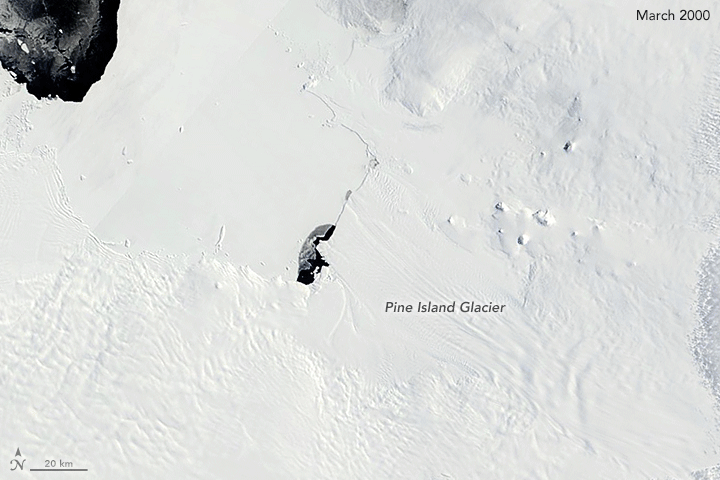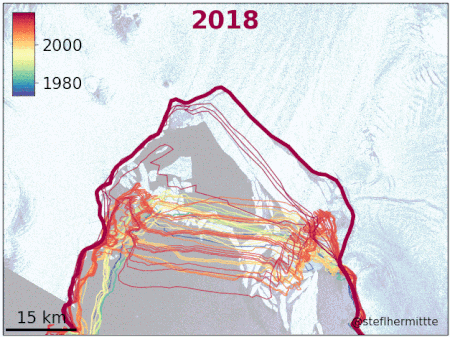Fast Glacial Retreat In Antarctica
Pine Island glacier cracks off 9-23-2017, West Antarctica, (credit: Stef Lhermitte)
Within months, a crack seen in a massive glacier in West Antarctica separated into an iceberg. First announced in a Twitter feed by Stef Lhermitte of Delft University in The Netherlands, a piece of ice 4-times the size of Manhattan floated away from the leading front of the Pine Island glacier.
For multiple years, the European Space Agency (ESA) has used the Sentinel II Earth observing satellite to monitor changes to this glacier. Both NASA and the ESA created animations to illustrate the degradation process as warmer ocean water reaches under the floating portion of iceshelf. Cracks result on the glacier's leading edge and new icebergs calve off. Colors indicate where breaks have occurred since 1992.


Retreat of Pine Island glacier West Antarctica, 2000-2019 (credit: NASA) Pine Island glacier retreat, 1973-2000 (credit: ESA, Stef Lhermitte)
Previously, Earth scientists at Ohio State University noted that the Pine Island glacier was likely being "hollowed out from below". Their observations concluded:
“It’s generally accepted that it’s no longer a question of whether the West Antarctic Ice Sheet will melt, it’s a question of when. This kind of rifting behavior provides another mechanism for rapid retreat of these glaciers, adding to the probability that we may see significant collapse of West Antarctica in our lifetimes.”
Climate models have predicted changes to Antarctica from climate change would not begin to be seen until the mid-21st Century. The models need adjusting as the latest glacial events in Antarctica show.
WHB